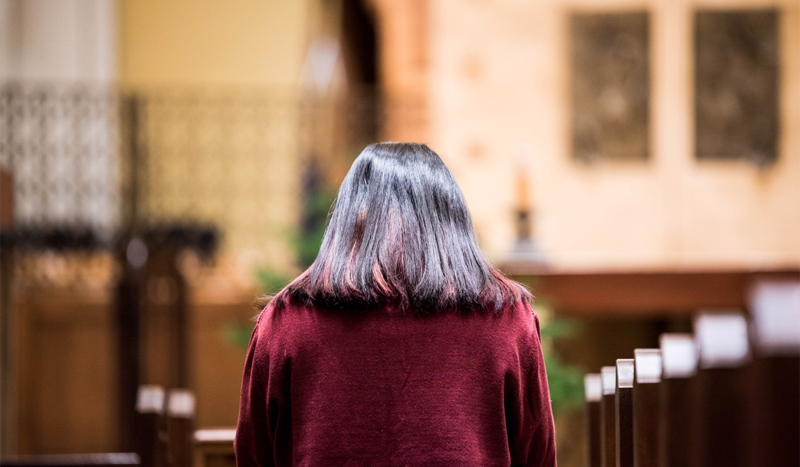
Gianna B / Unsplash
CV NEWS FEED // Holy Saturday, the quiet bridge between Good Friday’s sorrow and Easter Sunday’s joy, often passes unnoticed in the modern Catholic rhythm. Yet this day, which is rich in silence, symbolism, and sacred waiting, is a vital part of the Paschal Triduum.
The word Triduum comes from Latin, meaning “three days,” and refers to the liturgical span from the evening of Holy Thursday through Easter Sunday, commemorating the Passion, death, and Resurrection of Jesus Christ.
Liturgically, Holy Saturday is marked by absence. The altar remains stripped, the tabernacle stands empty, and the sanctuary lamp is extinguished. Churches are silent, and no Mass is celebrated until the Easter Vigil. The Church enters into Christ’s rest in the tomb, commemorating His descent into the realm of the dead to free the righteous.
This stillness is not void. It is a sacred space for contemplation and anticipation. In the silence of Holy Saturday, the Church turns her gaze to Mary, who is a model of faithful waiting. While the apostles were scattered and afraid after Jesus’ death, Mary kept unwavering vigil, trusting in the promises of her Son.
The Church’s Office of Readings for Holy Saturday includes an ancient homily that begins, “Something strange is happening — there is a great silence on earth today …” It poetically describes Christ’s descent to the dead, awakening Adam and Eve and liberating those who had awaited the Messiah in death.
Though the Church refrains from public liturgies on Holy Saturday, the faithful are encouraged to engage in personal prayer and reflection. Families might pray the Rosary, meditate on the Stations of the Cross, or begin the Divine Mercy Novena, which traditionally starts on Good Friday. Fasting is also encouraged, though not required.
Only the sacraments of Penance, Anointing of the Sick and, in cases of emergency, Baptism are permitted on this day, emphasizing the Church’s solemn waiting at the Lord’s tomb.
Amid the solemnity, a cherished tradition brings families to churches with baskets of Easter foods. Known as Święconka in Polish communities, this custom involves the blessing of baskets containing items like eggs, bread, meats, and sweets — foods that will break the Lenten fast on Easter morning.
The baskets are often adorned with white linens and sprigs of greenery, symbolizing purity and new life. This ritual, deeply rooted in Eastern European Catholicism, serves as a tangible expression of hope and gratitude.
Some households use the day to prepare their homes for Easter, dyeing eggs, baking, and setting up festive decorations, all while maintaining a spirit of reverence.
Nestled between two of the Church’s most solemn and glorious days, Holy Saturday is often overlooked — yet it offers a sacred pause for prayerful stillness and quiet hope. It invites Catholics to dwell in the silence of the tomb, to sit with the mystery of death and the promise of new life.
As night falls, Holy Saturday gives way to the Easter Vigil — which St. Augustine called the “mother of all vigils.” This solemn liturgy begins in darkness and progresses through the Liturgy of the Word, which recounts salvation history, includes the blessing of water and the reception of new Catholics through Baptism and Confirmation, and culminates in the celebration of the Resurrection.

